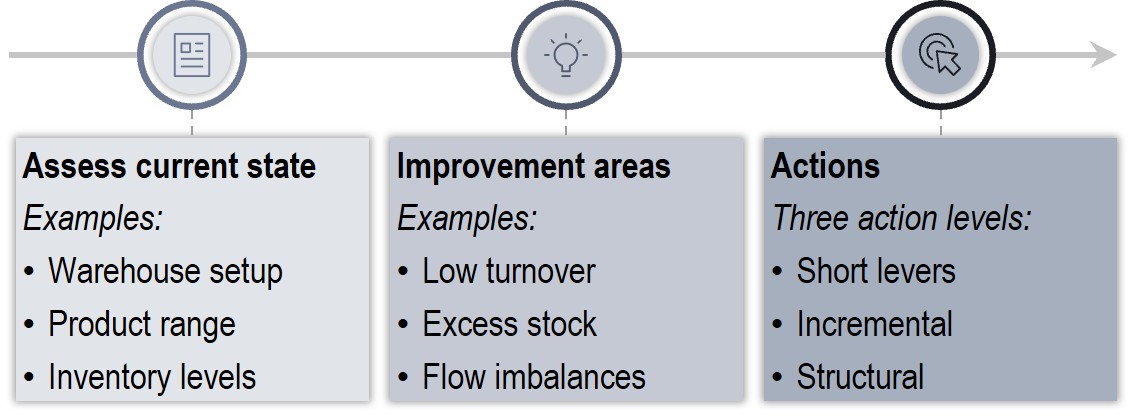Mastering Inventory Management


Mastering inventory management is a central part of today's supply chains. It affects not only cost levels but also on-time delivery, customer satisfaction, and how well a company handles fluctuations in demand and supply. No longer a background function, inventory management has become a strategic lever for long-term, well-informed decisions.
Rethinking inventory management
Inventory management has traditionally focused on securing availability, especially in times of disrupted supply chains and unpredictable demand. However, rising interest rates and increasing pressure on profitability challenge companies to maintain availability while minimizing capital tied up in inventory.
”It is not enough to have the products in place – it must be economically sustainable”
Addressing this challenge requires balance. Companies must secure availability, stay flexible to respond to shifting demands, and manage capital efficiently. When these priorities are in balance, companies can ensure availability, remain adaptable, and manage capital wisely, making inventory a strategic asset.
Managing complexity through structure
While the goal may sound simple – the right product, in the right quantity, at the right place – inventory management is far more complex. Challenges include unpredictable demand, unreliable lead times, limited system visibility, and unclear accountability. To create clarity and drive improvement, companies can follow three structured steps, as illustrated in the figure:

The approach moves from assessing the current state, to identifying improvement areas, to selecting the appropriate type of action. Actions typically fall into three categories:
• Short-levers: Free up capital fast by scrapping obsolete items or reducing safety stock, though these may affect service levels or other KPIs
• Incremental: Adress root causes incrementally by improving data quality, tracking slow movers, and managing phase-in/phase-out more proactively
• Structural: Redesign footprint, product portfolio, or supplier setup for long-term gains with minimal negative impact on other KPIs
“When inventory becomes part of decision-making, it is not just a cost, but also a competitive advantage”
Inventory as an enabler
Strategically managed, inventory becomes more than a cost, it becomes a tool to build resilience. With better visibility, analysis, and follow-up, companies can improve availability, reduce lead times and lower tied-up capital, all at once.

